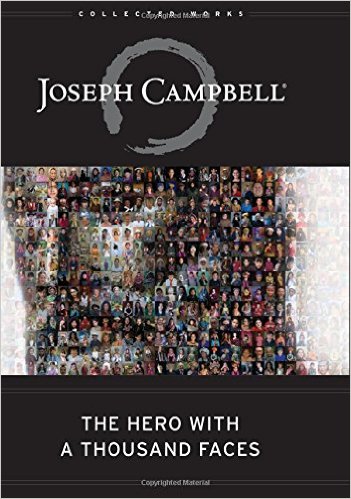'The hero with a thousand faces' is a book of comparative mythology where the author has tried to show the similarities between the myths prevalent in many parts of the world. One will wonder how strikingly similar are the mythologies of seemingly disconnected communities across the world. Hence, the title of this book seems apt as if it is describing a single hero seen by different communities in many different forms. The author of this book Joseph Campbell has also written a four-volume book on world mythologies titled 'The Masks of God.'
The book is divided into two parts. The first one is titled - 'The adventure of the Hero.' In this part, the author describes the monomyth - a myth found in most of the mythologies with slight variations. The monomyth describes the life of the hero - who may be a God, a saint or a worrier. The first step is the departure in which the hero gets a call to adventure by supernatural means or by the conditions prevailing around him. This is the first threshold that he has to cross. Then comes the initiation. In this phase, the hero faces many hurdles and has to prove that he is worthy of being the chosen one. When he attains the ultimate boon which can be some knowledge or any other possession, he is ready for the third phase - the return. In this phase, hero initially refuses to return to his previous world but then he is 'rescued' and returns. There he lives as a triumphant person who has mastery over some art or has knowledge of something hitherto secret to an ordinary human being.
The second part of the book is titled - 'The cosmogonic cycle.' It is concerned with metaphysical aspects of mythology such as the creation of the universe. In this part, the author discusses the meaning given to things around us in mythology. An important topic of all the mythologies is creation and destruction - of both unit (microcosm) and universe (macrocosm) itself. In this part, the author also describes many forms given to the hero in mythologies such as lover, warrior, emperor, redeemer and saint.
In this book, the author Joseph Campbell has tried to explain the reason behind the myths by taking recourse to theories put forward by Jung and Freud. It was implied that man invented theories involving heroic figures for the events which could not be explained by existing knowledge or to quell the fear of unknown. This book is somewhat difficult to read without the prior knowledge of mythology and psychology, but once you get the summary of the theories involved, it becomes easy to comprehend. The author has given so many examples of the myths (stories from the communities around the world) that the larger monomyth formed by combining them is so convincing. It could be said that without knowing the examples it would have been so difficult to believe that mythological figures from around the world are so similar. Almost all the major and minor religions are represented in the stories presented in this book.
This book has attained a legendary status and is widely referred by the students of mythology. George Lucas has accepted that this book affected the story of the Star Wars. In a chapter titled 'The hero of today', the author concludes that the symbols which interested ancient societies have lost their force for the individual today. The author says-
"The descent of the occidental sciences from the heavens to the earth (from seventeenth-century astronomy to nineteenth-century biology) and their concentration today, at last, on the man himself (in twentieth-century anthropology and psychology) make the path of a prodigious transfer of the focal point of the human wonder."
The author concludes in the end that it is not the society that is to guide and save the creative hero but precisely reverse.

